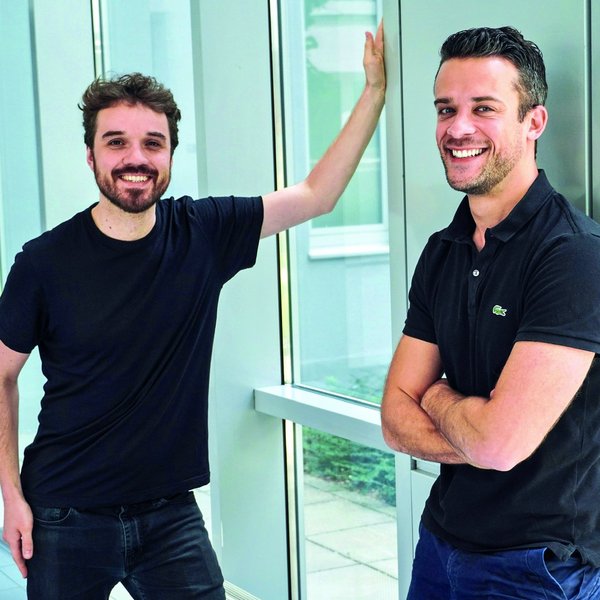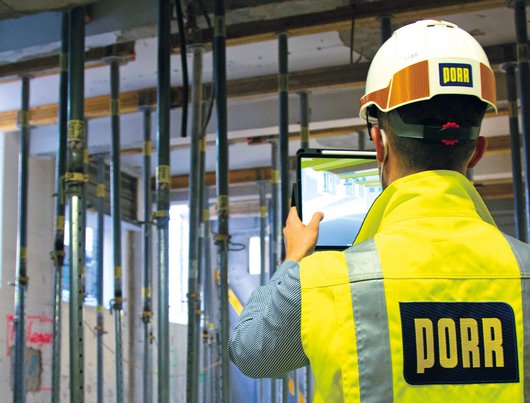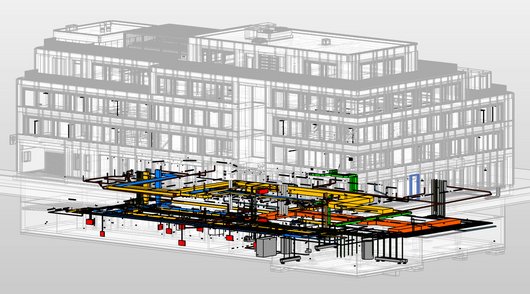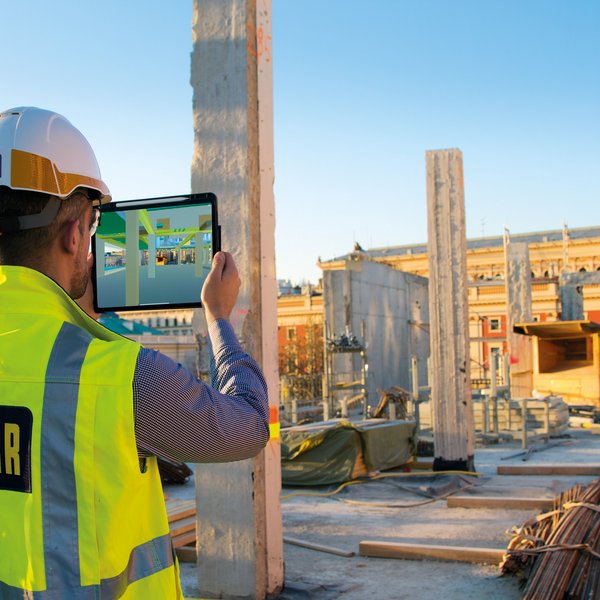
Digital perspectives
Tuesday, 9:30 am. A meeting at the construction site. Ten project participants – from BIM experts to the architect, the project manager to the developer – have gathered in front of a plan. But this is not printed on paper but on a digital whiteboard. They are looking at a digital twin, i.e. a model of a residential building. The shell stands in front of the construction container. And the delivery of French windows with integrated fall protection is scheduled for today.
Together the team checks the digital model once more to see where the windows need to be placed and how this will affect the facade. A glance at the Business Intelligence Software shows that the trucks and so the windows too are already en route to the construction site. Everything is going to plan.
Mobile options
The team goes through the shell, armed with tablets. Before the final window check, the project experts head to the underground car park to check on the progress with the piping and ducts once again. By making constant reference to the BIM model and thanks to the RFID chips in the construction components, it is possible to see into the thick concrete foundations. On his tablet’s display, the project manager proudly points out the accurately laid pipes and electric cables. A check against the digital building plan confirms that everything has been installed properly and that the next phase of construction can be initiated.


Skilled window installation
After climbing to the fifth floor, the team inspects the brickwork. While the tradesmen on the site below are finalising the preparations for the imminent window delivery, an expert scans the brickwork with his tablet. The window module immediately appears on screen in a dedicated niche. This allows the viewer to get a clear picture of the next construction step already. After a quick approval process, the project manager confirms the inspection date in the digital worksheet on his smartphone with a single click. The installation will begin as soon as the delivery arrives.
Rational résumé
Immersive AR and VR applications are a focal point of the increasingly digitalised construction industry. Virtual Reality, i.e. creating completely virtual worlds, and Augmented Reality, in which artificial elements blend with reality, are being used more and more often in the construction sector. Mixed Reality applications facilitate visual building information and lead to greater transparency in construction projects – literally – however complex the project. These innovative solutions help project managers and teams make well-informed decisions while making it easier to compare and evaluate what’s actually happening on site.
They still exist, of course, the paper plans. But so does the construction site of the future. BIM and Lean, Augmented and Virtual Reality, as well as a range of apps, all serve to optimize processes, simplify the daily work of everyone involved in the project and thereby provide transparency and, most importantly, satisfied customers. After all, intelligent construction connects people.




![[Translate to Englisch:] (c) PORR [Translate to Englisch:] (c) PORR](/fileadmin/_processed_/1/e/csm_181114_WO_PORR_RCH_8067_8de8f07cee.jpg)